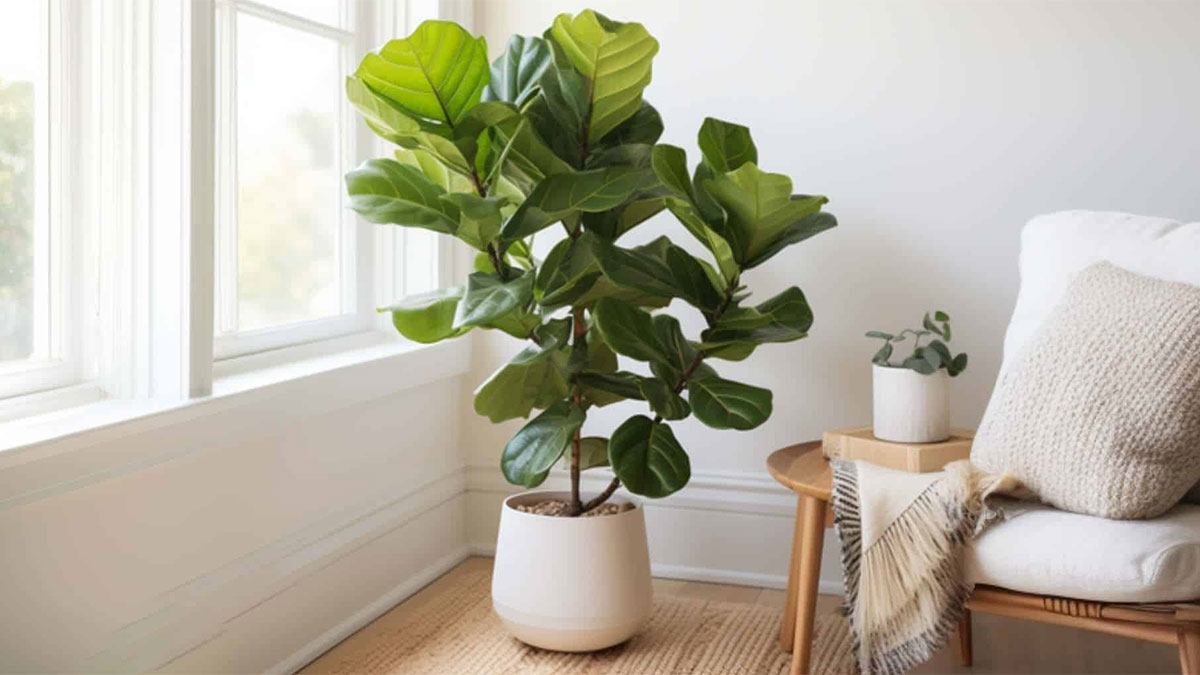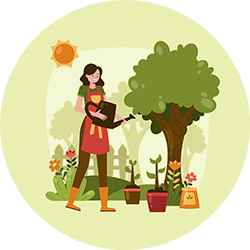How to Care For a Fiddle Leaf Fig (Ficus Lyrata)

The fiddle leaf fig has become a staple in many homes, admired for its bold leaves and sculptural form. But behind its beauty is a plant with specific needs that can puzzle even experienced gardeners. This guide walks you through the most effective ways to care for your fiddle leaf fig so it not only survives, but thrives indoors.
Understanding your fiddle leaf fig
The fiddle leaf fig, or Ficus lyrata, is known for its large, glossy leaves and striking upright growth. It’s a popular indoor plant thanks to its sculptural beauty and ability to brighten any room. Although it can be a bit temperamental, the right care can help it thrive for years.
In its native habitat, this plant grows as a tall tree in warm, humid conditions. Indoors, it prefers stable environments with plenty of light. Understanding its natural preferences is the first step to meeting its needs at home.
Choosing the right location
Fiddle leaf figs need bright, indirect sunlight to stay healthy. A spot near a large, east- or south-facing window often works best. Avoid direct midday sun, which can burn the leaves.
Try to keep your plant away from drafty windows or heating vents. Sudden temperature changes can cause stress and lead to leaf drop. Rotating the pot every week or so helps the plant grow evenly and prevents it from leaning toward the light.
Watering correctly
Watering is one of the trickiest parts of fiddle leaf fig care. Let the top inch or two of soil dry out between waterings, then water thoroughly until it drains from the bottom. Be sure to empty any excess water from the saucer to prevent root rot.
Overwatering can cause yellowing leaves and a musty smell from the soil. Underwatering, on the other hand, often leads to dry, crispy edges. Adjust your watering schedule based on the season, as plants typically need less water in winter.
Managing humidity and temperature
These tropical plants prefer moderate to high humidity, ideally above 40 percent. In dry homes, especially during winter, a small humidifier nearby can make a big difference. You can also mist the leaves occasionally or place the pot on a tray filled with pebbles and water.
Fiddle leaf figs like a consistent indoor temperature between 65 and 75°F. Keep them away from cold drafts, space heaters, or AC vents that create sudden temperature swings. If your plant seems sluggish, check whether the temperature or humidity needs adjustment.
Fertilizing for healthy growth
During the spring and summer months, feed your fiddle leaf fig once a month with a balanced liquid fertilizer. Choose one labeled for indoor houseplants and dilute it to half strength to avoid overfeeding. In fall and winter, hold off on fertilizer as the plant naturally slows its growth.
A lack of nutrients may result in smaller new leaves or overall slow growth. If your plant seems healthy but isn’t growing much, try adding fertilizer to your care routine. Just be careful not to overdo it, as too much can damage the roots.
Repotting and soil essentials
Most fiddle leaf figs need repotting every one to two years. If you see roots growing out of the drainage holes or notice water sitting on the surface of the soil, it may be time to upgrade to a larger pot. Choose a container that’s 2 to 4 inches wider than the current one and has good drainage.
Use a well-aerated potting mix that retains moisture but doesn’t stay soggy. A blend of regular potting soil, perlite, and peat moss or coconut coir works well. After repotting, water the plant thoroughly and keep it out of direct sun for a few days while it adjusts.
Pruning and shaping
Pruning helps keep your fiddle leaf fig looking full and healthy. Use clean, sharp shears to cut just above a leaf node or branching point. Spring is the best time to prune, as it encourages fresh growth during the active season.
To encourage a bushier plant, pinch off the growing tips at the top of the stem. This tells the plant to send out new growth lower down, making it less leggy. Remove any dead or damaged leaves as needed to keep the plant tidy and improve airflow.
Dealing with common problems
If your plant’s leaves are developing brown spots, it may be a sign of overwatering or poor drainage. Root rot is a common issue and should be addressed quickly by reducing watering and improving soil conditions. Yellow leaves may indicate overwatering or a sudden drop in temperature.
Pests like mealybugs, spider mites, and scale insects occasionally appear, especially on plants that are stressed. Treat infestations with insecticidal soap or neem oil and isolate the plant if needed. Regularly wipe down the leaves to remove dust and check for pests.
Leggy growth or small leaves often means your plant needs more light. Try moving it closer to a window or supplementing with a grow light. Most problems with fiddle leaf figs can be fixed by adjusting water, light, or humidity.
Long-term care tips
As your plant matures, it may need extra support. A bamboo stake or plant tie can help keep tall stems upright. If your fig becomes top-heavy, you can prune it back and use the cuttings to propagate new plants.
Adjust your care routine with the seasons. In summer, the plant may need more frequent watering and feeding, while in winter, both should be scaled back. If you want to move your plant outside in summer, do so gradually to avoid sun shock.
With consistent care and attention to its needs, your fiddle leaf fig can grow into a striking, long-lived indoor centerpiece.
Conclusion
Caring for a fiddle leaf fig doesn’t have to be a mystery. With the right light, water, and attention, you can keep your plant healthy and full of life year-round. Stick to these practical tips and your fiddle leaf fig will reward you with strong growth and lush, vibrant foliage.
